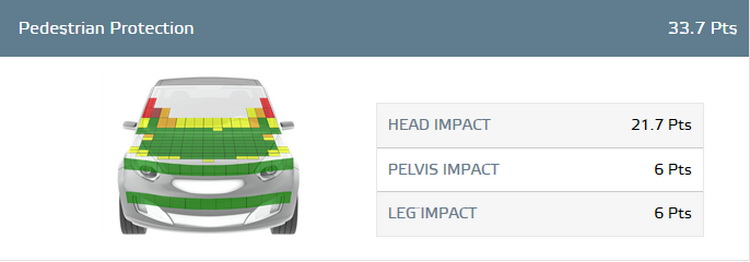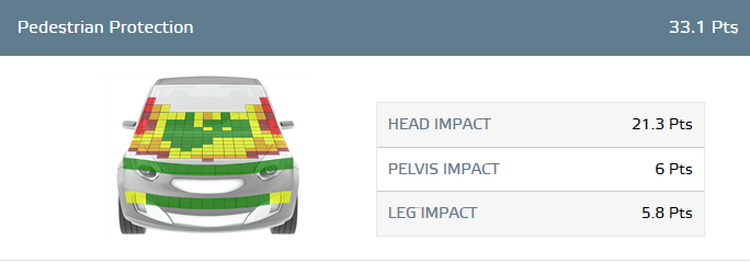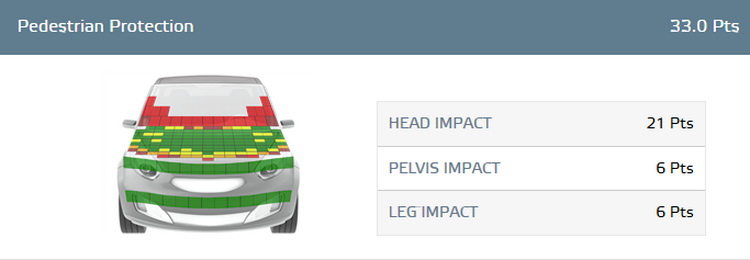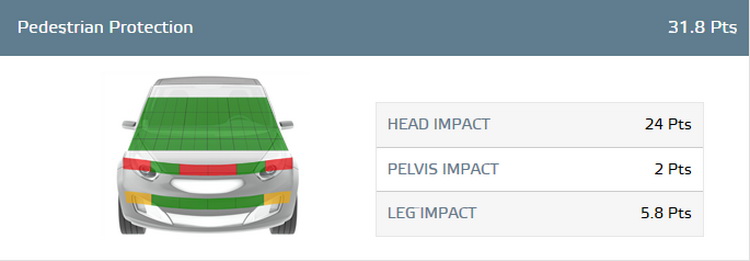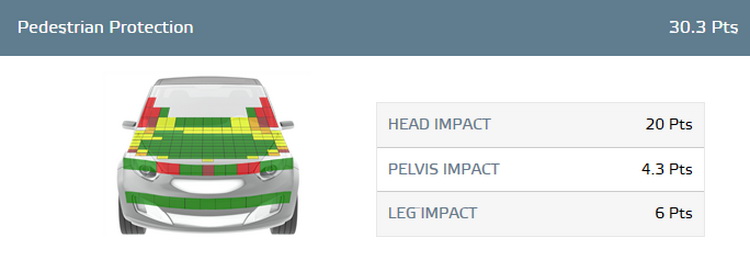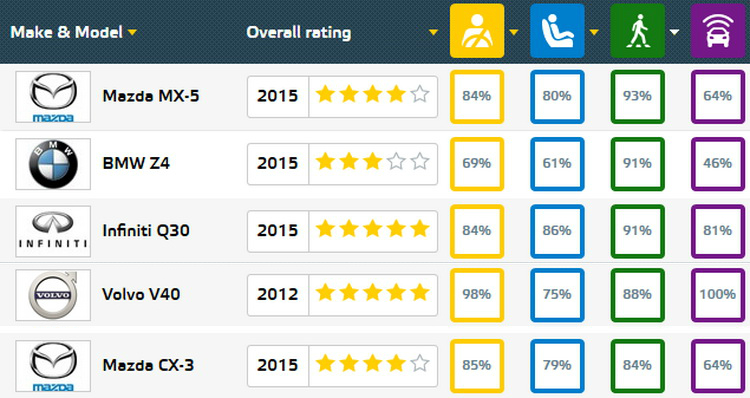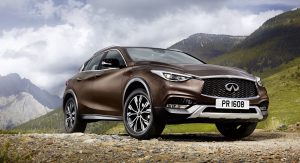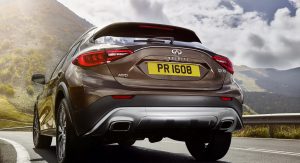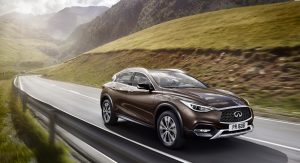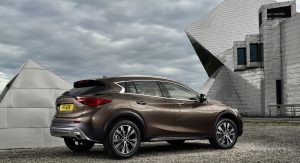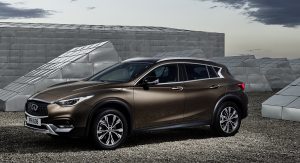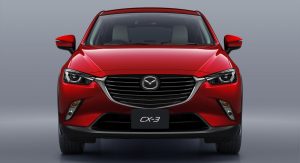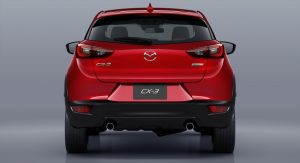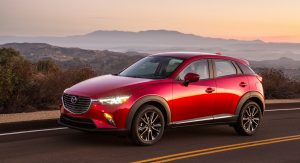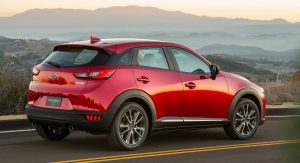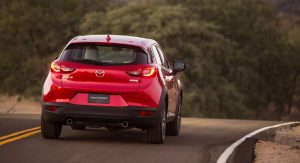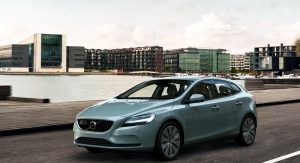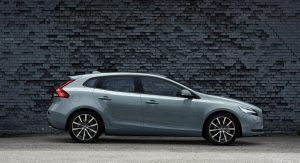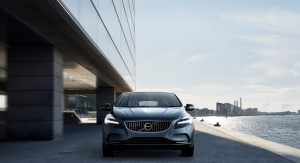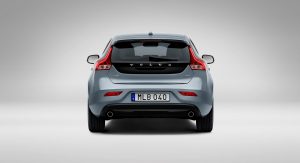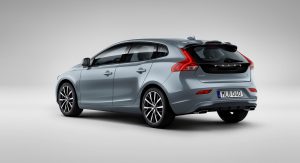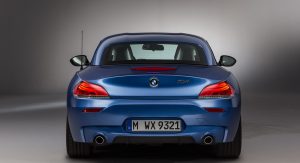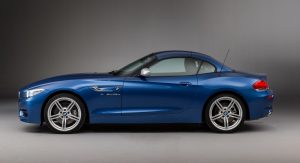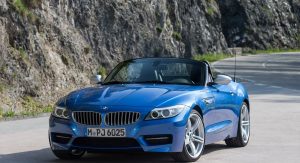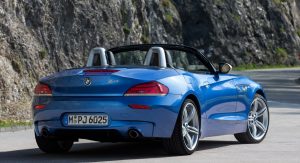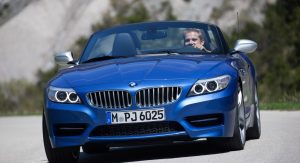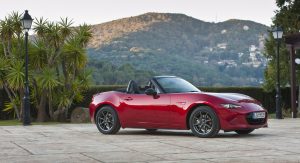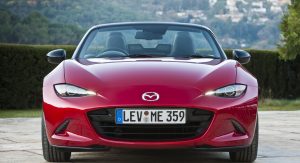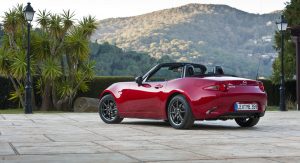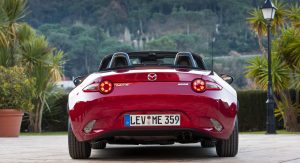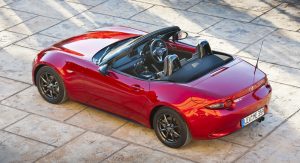In Europe, about 14% of all road fatalities involve pedestrians, which makes EuroNCAP’s tests extremely important and crucial to a car’s overall safety rating.
The Pedestrian Protection rating is determined by testing front-end structures such as the hood (plus the edge), the windshield and the bumper. A team of experts then evaluates the potential risk at injuries to a pedestrian’s head, pelvis, upper and lower leg. Of course, if the car comes with some type of an autonomous emergency braking system, it will receive additional points.
So, here are the five most “pedestrian-friendly” models as tested by the independent safety organization.
#1 Mazda MX-5
The new Japanese roadster scored a maximum of 93% during EuroNCAP’s Pedestrian Protection tests, to go with 21.7 points for Head Impact, 6 points Pelvis Impact and 6 points Leg Impact – and overall that’s good enough to take the prize.
One might think that the MX-5 scored so well thanks to its low height, but it’s not that simple – the work that goes into designing a car with pedestrian safety in mind is a lot more complex than deciding how tall or short the vehicle should be. For example the VW Scirocco is another model you might think would fare well under these conditions but you really wouldn’t want to be on the receiving end of one.
#2 BMW Z4
Yet another roadster, with an overall Pedestrian Protection score of 91% with head, pelvis and leg impact points very similar to those scored by the MX-5.
So while any kind of contact is surely far from welcome, and not one is exactly the same as another at least chances are this model won’t hurt you as badly as your run-of-the-mill hatchback or saloon – not to mention an SUV or van.
#3 Infiniti Q30
Asking yourself how the new Infiniti Q30 made it on this Top 5 sounds like a good question, seen as how that aggressive front end looks purposely built for ramming into things.
However, it turns out that the Q30 is a very safe car for pedestrians, with an overall score of 91% (the same as the Z4). It even got as many Leg Impact points as the MX-5 (0.2 more than the Z4) and that makes for a very impressive achievement. Furthermore, the Q30 has more active safety systems than either the Z4 or the MX-5 and these types of systems do tend to influence results quite a lot.
Still, EuroNCAP only rewards the tech if “the pedestrian impact tests show that the car has a forgiving front design”.
#4 Volvo V40
Having a Volvo in this list is no surprise, given the Swedes’ obsession with safety before it was “fashionable”.
The V40 has 5-star rating and actually offers the absolute best Head Impact protection. EuroNCAP carries out a series of 40 km/h (24 mph) impact tests using both an adult and a child head form “impactor”. Cars that feature energy absorbing structures, deformation clearance and deployable protection systems like the pop-up bonnet and/or external airbags will always receive a higher score than those that don’t. The Volvo V40 actually comes with the world’s first Pedestrian Airbag, which in this case is the main reason why it features the best score in terms of Head Impact protection.
#5 Mazda CX-3
Even though it’s technically a crossover, the CX-3 received a better score than the all-new Opel Astra or the sporty Audi TT when it came to protecting pedestrians. It even offers better Head Impact protection than the smaller Mazda 2 (overall identical score), though pelvis-wise it falls a little short.
Mazda certainly did very well for themselves with the MX-5, CX-3 and the Mazda 2 (identical score to the CX-3). Nevertheless, the Infiniti Q30 and the Volvo V40 are the only cars in the Top 5 that have been awarded an overall 5-star rating from EuroNCAP.



![Top 5 Pedestrian-Friendly Cars Tested By EuroNCAP [w/Video]](https://www.carscoops.com/wp-content/uploads/2016/04/EURONCAP-0.jpg)
